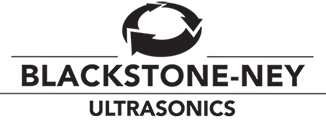Preceeding blogs have discussed de-ionized or “DI” water, its benefits and its uses at some length. Today’s blog will discuss “Reverse Osmosis” water otherwise known as “RO” water.
RO water is like a second cousin of de-ionized water. In the de-ionization process, potentially ALL ions are removed resulting in water that can approach the ultimate limit for pure water of 18 megohms resistance. The fact of the matter is that not all process (in fact, very few) truly require the purity of de-ionized water. Cosmetically “spot free” rinsing, for example, can be achieved using water with a resistivity as low as 1 megohm depending on the application. RO water with a resistivity in excess of 1 megohm can be produced economically using relatively simple, low maintenance devices.
The heart of the RO water device is what is a “semi-permeable” membrane. This membrane is made of a material that will allow water molecules to pass through freely while challenging ions. I say “challenging” because a significant percentage but not ALL ions are stopped by the membrane. The membrane is not purely a filter as it may also have certain other properties that make it pass water while rejecting ions.

In application, source water under pressure is caused to flow roughly parallel to the surface of the semi-permeable membrane. This is as opposed to the typically perpendicular flow in a filtration system where all of the flow passes through the filter. The water molecules that pass through the membrane as the water flows over its surface are collected on the other side as “permeate.” The permeate contains a lower concentration ions than the source water did. The remaining water (and ions) that do not pass through the membrane result in what is called a “reject” stream. The reject stream is comprised of water with a higher concentration of ions than the source water. The degree of separation depends on the membrane and the flow rate through the system.
On the PLUS side, the membranes used to produce RO water do not need constant replacement. The flow of water parallel to the surface washes away retained ions and other debris. This usually results in lower upkeep and maintenance costs attributed to a RO water system.
On the (potentially) MINUS side, there is always a reject stream rich in ions which, in some cases, may simply be a waste of water if it is directed to drain. However, in a well-planned installation, the reject stream can, in fact, become a source of water which, since the portion with reduced ion content has already been harvested may, in essence, be considered “Free.” This water can be used in other applications where its higher ion content is not an issue such as pre-washing, domestic (toilets, etc.), floor washing or even landscape irrigation. In most car washes with a “spot-free” rinse, the permeate is used for the spot-free rinse while the reject is used in the actual washing and pre-rinsing process.
One of the often overlooked positives of RO water over DI water is the fact that the vast majority of microbes and other organic contamination will not pass through the semi-permeable membrane. This, in short, renders RO water “bug free.” Water that has been through the conventional de-ionization process, although it commonly has a lower ion content than RO water is not necessarily free of microbial contamination. This is why the RO and DI process may be used in series where both ions and microbes are of concern.
– FJF –

 Water – De-ionized – Hints
Water – De-ionized – Hints  A Fond Farewell to John Fuchs
A Fond Farewell to John Fuchs  Millipore Testing – Evaluation by Particle Counting
Millipore Testing – Evaluation by Particle Counting  Tape Test for Cleaning Revisited
Tape Test for Cleaning Revisited